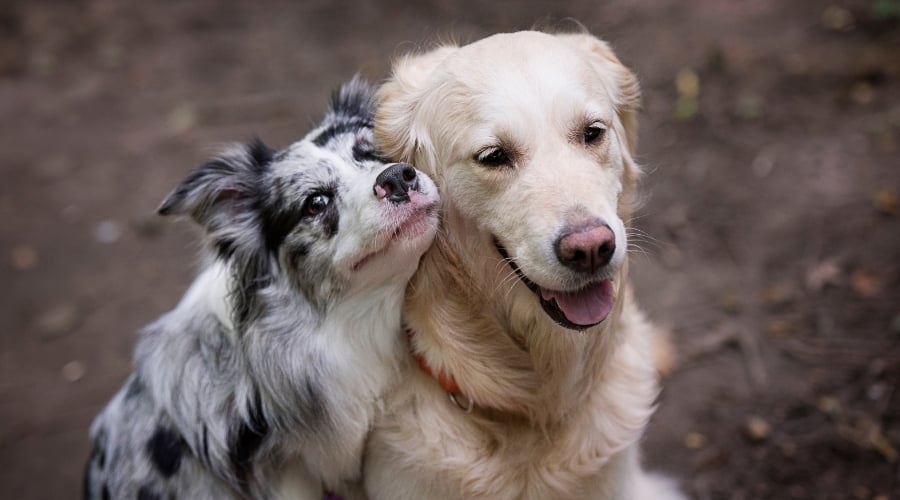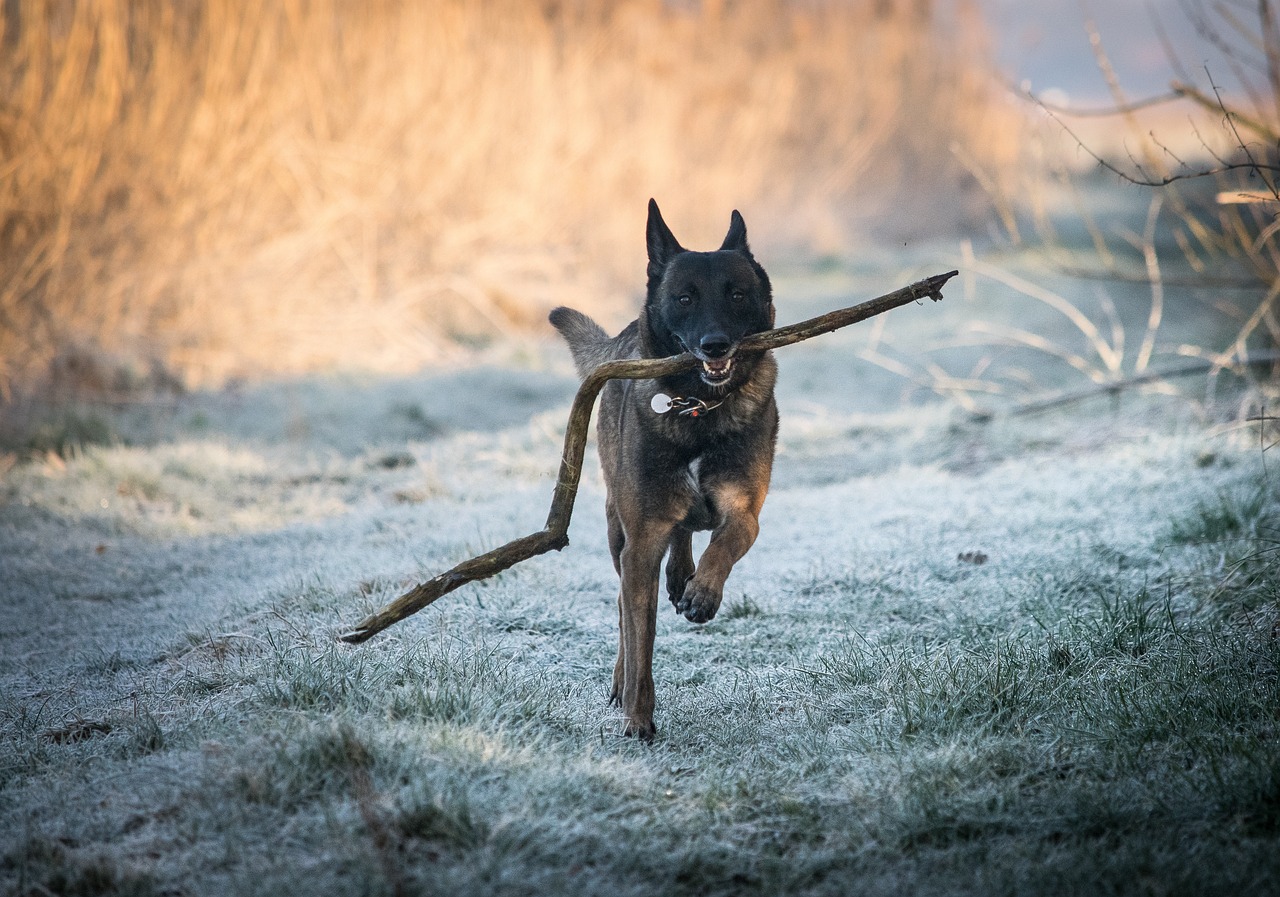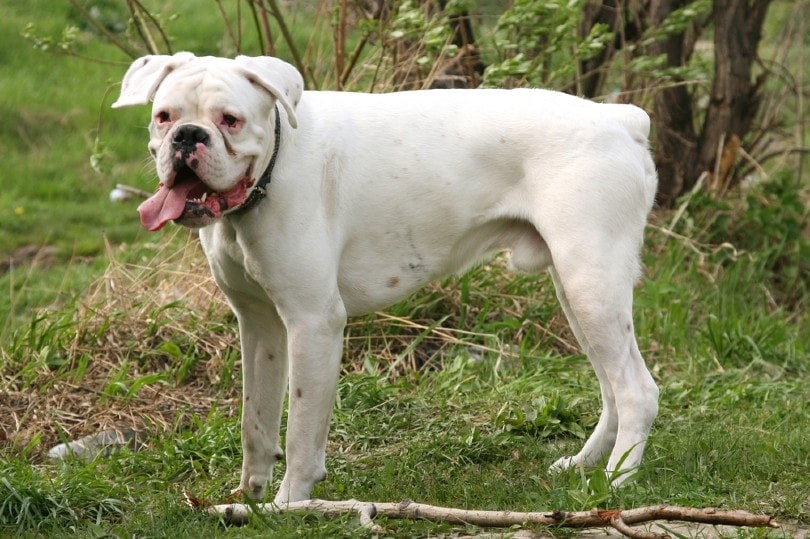
Do you have a passion for breeding? are you planning to breed your male pet? Do you wish to be the father of a few gorgeous and healthy puppies? Are you aware of the best ways to breed the male of your dog? As a dog lover and a friend who is a breeder of male dog breeds, we can be able to answer these questions and many more.
What is the maximum number of times male dogs breed in one day? Male dogs can successfully breed with one female between 1 and 2 times per every day. If several females are in a heated state where they are available and healthy, a fresh male is able to reproduce up to five times per morning.
We’ll address the most frequently asked questions that owners or breeders might have, and provide helpful strategies to keep your pet in good condition. Be aware that age has an impact, so find out what happens when a dog becomes too old to be able to breed so that your litter of puppies is as healthy as it could be.
Read on to find out the most common mistakes breeders and owners make and ways to avoid these.
What is the maximum number of times a male dog is bred in a single day?
Male dogs can successfully breed with one female between 1 and 2 times per every day. If several females with a mate are available healthy and young males can create a litter up to 5 times per day.
Although the stud dog might be ready to breed 10, (or more) every day, the odds of an impregnation that is successful are very slim.
Can male dogs breed every day?

Yes, male dogs are able to breed throughout the day. But, it is suggested that dogs take an entire day of rest between the pairing. It is recommended to each day breed to produce better offspring.
It is suggested that you breed male dogs one time per week or less. The longer time between the breeding session, the better for the dog as well as the children that result from it.
How many days can a breeder of stud dogs?
Based depending on how big the dog is, males can breed every day for several days. For smaller dogs, this can be daily for up to three consecutive days and large males can breed each day for five straight days.
Can a stud dog breed two times in one day?
Yes healthy and fit male dogs are capable of being paired twice a day if the female is open to it. Stud dogs can create up to five breeding pairs in a single day if multiple females with a heat history are available.
If a dog of a male breeds more than twice per day, is it bad?
It’s not entirely. However, giving your pet the time to recuperate is crucial. It is important to breed your dog several times per day isn’t recommended.
What’s the ideal timing to reproduce twice daily?
The early morning and late evening are the best times to have a breeding day. Make sure your dog gets enough rest between rounds. The spread of the two sessions will ensure that your dog’s stud has the energy and enthusiasm to breed.
Do I have any dangers If my dog’s stud is bred two times in one day?
It is not recommended if it is done only occasionally. Stud dogs are capable of being paired more than two times per day. However, keep in mind that doing it regularly can cause exhaustion to the dog. The chance of impregnation is reduced. To ensure the health of your Stud dog, give one to two days between the pairing.
The number of times male dogs breed in one month, and throughout the year?

Male stud dogs are able to breed 30 times in a month or 360 times in a year.
But this isn’t feasible as dogs require some time to recover. Although healthy stud dogs that are neutered can reproduce multiple times over the course of a year or month, however, they shouldn’t breed more than two weeks. That means they are able to breed at least 15 times in a month and up to 180 times per year.
A few more partnering sessions every now and then won’t hurt however, you should keep your non-neutered male dogs on leashes to avoid pairing together with female dogs who is in hot weather and then having unexpected puppies.
When does my dog begin to partner?
It is dependent on the breed and the size that the dog is male. there isn’t a standard regarding this. In general, male dogs are ready to partner at about 6-12 months. Some stud dogs mature around five months, while other larger stud dogs could have a longer time to mature and reach two years old.
Here’s the breakdown based on the size of the dog:
- Smaller breeds of dogs mature faster, at about 12 months.
- Medium-sized male dogs can mature between 15 and 18 months of age.
- Larger-sized stud dogs are mature between 18 and 24 months of age.
When is the best time for male dogs to begin breeding?

While it is acceptable to let a 6 – to seven-month-old dog breed it’s ideal to allow that dog’s development several months. It is best to wait until the dog is 1.5 to two years old before he can begin breeding. When that time comes the dog is deemed an adult.
Popular sire syndrome dogs
Popular Stud or Popular Sire Syndrome is the term used to describe when an adult male dog with extraordinary physical traits is chosen to breed in a series of. Studs of sought-after breeds or with a record of winning in competitions are often affected by famous sire syndrome.
The popular sire syndrome can be detrimental to the dog population. It can increase the chance of genetic defects in the sire passing down and multiplying in subsequent generations. We might not even be aware of this condition until a few generations later.
Are you over-breeding your male stud dog?
Overbreeding refers to breeding male dogs without considering health and well-being. If you have bred with your female dog doesn’t only impact his health but it also affects his health and that of your resulting litter of puppies. In addition, having the breed too frequently will result in too many undesirable offsprings.
Are there any helpful ways to ensure you don’t cross-breed with your dog’s male?

Here are some guidelines to follow to make sure that you don’t breed your dog too much.
- Breeding frequency. While it’s okay to allow your dog to breed on a regular basis however it could become exhausting over the long term -even if the dog is willing to. Breeders who are experts let their male animals breed more than twice a week. Some breed only every few months.
- The purpose of the breed. Before having your breed of dog, you should ask yourself what is the purpose behind creating a breeding program for your dog. If the goal is to create offspring, inquire if those puppies will have a permanent place to call home once they’re born. There’s no reason to introduce unwanted puppies into the world, as they’ll most likely end up being killed.
- Examine the health of your dog. Check the dog’s health before allowing him to breed. Physical examinations will give you an idea of the dog’s condition to breed.
- Do not start too early. While small dogs develop from 6-to-7 months old, there’s no reason to breed them so early. It is best to allow the dogs to grow further before letting them breed. You should wait 4 to five months more after the dog has reached puberty to get the best results.
- Do not force your dog to breed. A dog that does not have the natural desire to breed should not be forced to breed. This is considered to be animal cruelty and is detrimental to the health of the dog. It is best to allow the dog to breed only when he displays the willingness to do it.
- Do not breed them for their entire life. There is no requirement to continue breeding all his life. To ensure that your litter is healthy breed your dog less frequently and only when they are at their peak.
- If you’ve bred a fair amount of times, get the dog neutered. After you’ve allowed your dog to have a balanced number of breeds, have his neuter. This way, he doesn’t keep partnering and generating unwanted puppies.
- Join a kennel club or other organization. Being a member of an organization like a kennel club will aid you in breeding your dog in a responsible manner. They can help you navigate the process and teach you the most effective methods.
7 tricks to help ensure that your dog is healthy
#1. A diet that is balanced and healthy

A diet rich in protein, and deficient in carbohydrates is crucial to the strong health of your dog’s stud. Natural fat sources can aid in keeping your dog in great form.
White and red meats are stuffed with protein, and organs and offal are great food sources of natural fats. Also, you can consume leafy greens from the stud. Try to stay away from grains and carbs as much as you can.
#2. Lean-to-normal weight
Dogs who have weight issues could transfer genetic problems onto their children. They also are more vulnerable to injury.
#3. Every day, you should exercise
Stud dogs require strength, balance, and flexibility to meet the demands of partnering. Regular exercise can help improve all of these aspects. In addition, it will help to prevent your dog from becoming overweight.
Exercise is also a great way to build endurance.
#4. Regular physical and health exams
A regular physical exam for dogs costs between $45 and $55. Adult dogs need a full health screening every year. Physical exams include Xrays examinations, eye/nose/ear examinations, skin tests, blood screening along with stool testing.
It is also recommended to have a check-up prior to having a breeding dog. The test must be conducted on both parents in order to confirm good health and avoidance of genetic disorders in the children.
#5. Regular vaccinations
The vaccination of adult dogs could cost between $10 and $100 per year. While all dogs must be vaccinated from a young age adults have their own vaccination needs. Rabies is one vaccination that must be administered in a timeframe that is determined by local law. Other vaccines are based on the history of health that the pet.
Pet owners of adult dogs are able to have their dog’s immune level assessed prior to deciding on which vaccines to opt for. The test is known as the Titer Test and costs around $40-$80.
#6. Don’t overbreed your dog
Overbreeding refers to breeding your dog for more than he is capable of handling or breeding him too often that he is a victim of the sire syndrome that is so popular.
The dog’s breed is a good choice every day is acceptable provided it’s carried out over a shorter period of time. It is best to provide at minimum an entire week’s time between pairings.
#7. Supplements to nutrition
If your dog is otherwise healthy, nutritional supplements could assist. Supplements could contain L-Carnitine for good health and also anti-oxidants to help prevent the aging process.
Conclusion
If you’re a pet owner or a breeder, long-term health should be the primary objective. In addition and giving the male dogs adequate rest, feeding them nutritiously, and seeing the vet frequently will ensure that your dog’s active and long life. It will also ensure lots of healthy offspring.